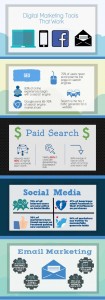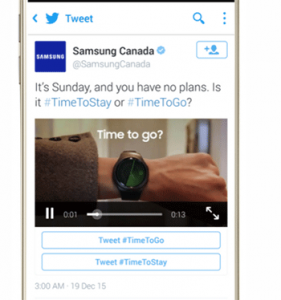Here’s a common phrase that perhaps you’re familiar with: “Don’t raise your voice, improve your argument.”
As an optimizer, you’re in the business of arguing. You’re constantly arguing with your visitors about whether they should leave their email or not, buy something or not.
Improving your argument, even just a little bit, can have a huge impact on your conversion rate. That’s where rhetoric and persuasion come in.
What is rhetoric and persuasion?
Plato once described rhetoric as “the art of ruling the minds of men”.
It is, formally, “the art of discourse, wherein a writer or speaker strives to inform, persuade or motivate particular audiences in specific situations”. Much of what the ancient Greeks (like Isocrates, Plato and Aristotle) taught about rhetoric is the basis for modern persuasion techniques.
Rhetoric is, essentially, the art of arguing. Not fighting, arguing. The goal of a fight is to win, the goal of an argument is to change someone’s mind.
As Ray Comfort of Living Waters explains, rhetoric is a powerful tool…
 Ray Comfort, Living Waters:
Ray Comfort, Living Waters:
“Rhetoric, which is the use of language to inform or persuade, is very important in shaping public opinion. We are very easily fooled by language and how it is used by others.” (via Lifehack)
But why does all of this matter to optimizers?
Because whether you realize it or not, every page of your site is an argument. The other side of the argument is simply taking place inside your visitor’s mind.
The better you argue your side, the more likely the conversion.
Modern Persuasion Techniques to Try
1. Set Your Goal and Your Audience Goal
- Set your own goal. What exactly do you want the visitor to do?
- Set your audience goal. What does the visitor have to change (e.g. their mood, their mind) for you to achieve your goal?
- Cicero came up with three steps to persuading people (listed in order of increasing difficulty): stimulate emotion (mood), change the opinion (mind), get the audience to act (desire to act).
- When trying to change an opinion, make your goal the reasonable middle or give an unfavorable extreme before your goal.
- When trying to get the audience to act, you have to convince them that what you want them to do is “no big deal”, that it won’t be a drastic change from their current state.
- Remember that it’s about getting what you want, achieving your goal. It’s not about “winning the argument”. Concede to a long-held audience belief instead of fighting against it… you might just get what you want.
Buckley’s cough medicine concedes to the belief that cough medicine tastes bad…

Also, Elle Magazine uses some unfavorable opt-out copy…

These types of passive aggressive popups are fairly common now, but rhetorical theory suggests the conversion rate might increase if the unfavorable extreme were positioned first.
Shipping and pricing pages are often another good example. Here, American Apparel positions “Two-Day” shipping as the reasonable middle option…

2. Be Aware of and Take Control of the Tense
- Aristotle says there are only three types of arguments: blame (“Who lost my car keys?”), values (“Should we be tougher on gun violence?”), and choice (“Should I buy this?”).
- Blame deals with the past (forensic rhetoric), values deal with the present (demonstrative rhetoric) and choice deals with the future (deliberative rhetoric).
- As an optimizer, you have to be aware of the tense of the argument. Since the future tense is about meeting mutual goals, it’s the one you should be dealing with.
- Past tense (forensic) deals with punishment, present tense (demonstrative) ends with either bonding or separation, and future tense (deliberative) promises an eventual payoff.
Dove, for example, uses the future tense to promise a payoff (“softer, smoother skin after just one shower”)…

This type of deliberative argument keeps visitors focused on the mutual goal.
3. Show Sympathy, Reluctancy and Sacrifice
- You should maintain the appearance of having only your audience’s best interest in mind, even to the point of sacrificing yourself for the good of others.
- Try a reluctant conclusion by acting as though you’ve reached your conclusion only because of its overwhelming rightness.
- Or a personal sacrifice where you make your goal seem like it helps the audience more than it helps you. Even better, make it seem like you’ll suffer if the goal is achieved.
- Or “dubitatio” by showing doubt in your own rhetorical genius. Start slow and remain plain-spoken then get passionately sincere, throwing your audience off the scent of persuasion.
Uber needs qualified drivers to remain in business, right? But look at how they use personal sacrifice in their recruitment copy…

The copy reads: “Drive when you want. Make what you need. Driving with Uber is flexible and rewarding, helping drivers meet their career and financial goals.”
Becoming a driver seems to help the visitor more than it helps Uber.
4. Do the Audience Research to Find Commonplaces
- To convince someone of something, you need to start with what they believe, value and desire. In rhetoric, these are known as commonplaces.
- Commonplaces are your starting point. They represent the ground your audience stands on at the moment. Your task is so make your audience believe that your goal is a very small step from commonplaces.
- Anything your audience repeats over and over again (e.g. specific words, specific phrases, concepts) during conversion research is likely a commonplace.
- During conversion research, pay close attention to the language visitors who didn’t convert use. You will likely hear a commonplace or two in a rejection.
- Try attaching a commonplace to your opinion or goal. Now anyone who opposes your opinion or goal will be seen as “other”, as an outsider in a group they closely identify with.
- Lean into your audience’s commonplaces, don’t try to oppose or change them.
One of my favorite online examples of commonplace language is 17hats…

When you’re reading the copy, it almost feels like a customer herself is making the argument. That’s because they’ve done the research and really understand their customers’ commonplaces.
5. Be Aware of and Take Control of the Words
- Try to attach favorable words and connotations to yourself, your brand and the goal you’re arguing for.
- What commonplace words describe you? What commonplace concepts do you fit into? Are there any commonplaces that can paint you, your brand or your goal in a favorable light?
- To take maintain control of the argument define the issue in a way that appeals to the values of the widest possible audience and focus on your specific goal in the future tense. If the facts just don’t support your goal, redefine the issue altogether until they do.
6. Avoid All Logical Fallacies
It’s no secret that logical fallacies exist and can easily throw a wrench into the plans of an optimizer…

According to Jay Heinrichs, author of Thank You for Arguing: What Aristotle, Lincoln, and Homer Simpson Can Teach Us About the Art of Persuasion, there are “seven logical sins”…
- False comparison: two things are similar, so they must be the same.
- Bad example: the example used is false, unbelievable, irrelevant or wrongly interpreted.
- Ignorance as proof: the lack of a concrete example proves that something doesn’t exist.
- Tautology: the proof and the actual conclusion are the same.
- False choice: the number of choices given is not equal to the actual number of choices that exist.
- Red herring: distracts the audience from the main issue.
- Wrong ending: the proof fails to lead to a concrete conclusion.
Jay boils the seven sins down to just three core mistakes: bad proof, bad conclusion, and disconnect between the proof and the conclusion.
7. Make the Old New, Correct Yourself and Repeat Yourself
- Take an old saying or cliche and give it a new spin. Maybe change the ending or a couple words to make it new again, clever.
- In the middle of a sentence, try correcting yourself to seem fair and focused on the truth while also turning up the volume on your argument.
- Try repeating the audience’s language (e.g. “too expensive”, “too time-consuming”) and correcting it.
- Or try using an either/or presentation with one obvious choice.
Moosejaw, for example, puts a clever twist on the famous phrase “carpe diem”…

8. Commonplace Words Make the Heart Grow Fonder
- The words we use reveal what we value most. It helps determine who is in and out of our personal circles. More importantly, it shows you how people define themselves.
- Use language unique to your audience (e.g. CrossFit’s “WOD”) to grow closer to them. Repeat those words and phrases regularly.
- Identify words and concepts that mean the exact opposite of the audience’s commonplaces so you can avoid using them or use them to describe competing goals (i.e. the goals of your direct and indirect competitors).
- Rational speech can be a huge detractor for some audiences. When you remain perfectly logical, you also distract from the values that drive your argument. Try using value-focused words instead.
9. Sorry, Not Sorry: Don’t Apologize
- Mistakes happen and things are bound to go wrong. When they do, don’t apologize.
- Instead: set your goals, be the first to deliver the news, switch to the future tense as quickly as possible, build up the person or group that’s suffering as a result of the circumstance, and simply express your feelings about not living up to your standards (or the standards of the person or group that’s suffering).
Last year, Sarah Bird of Moz announced that they’d be doubling down on search, which meant laying off 28% of their team. Unfortunate news for many, but the rhetoric Sarah used to position the news was flawless…

I really encourage you to read the entire article.
10. Identify and Even Create Persuadable Moments
- Changing circumstances and changing moods signal the start of a persuadable moment, which is a period of time where someone is more susceptible to persuasion.
- These can be natural, environmental changes that you’re capitalizing on or they can be changes created by you (e.g. an upsell or cross-sell CTA on a post-purchase page).
A great recent example of major change is the U.S. election. From President Obama to President Trump… the past few months have been full of related persuadable moments.
Cards Against Humanity wasn’t afraid to capitalize on them…

Of course, that’s not to say that the changing circumstance or mood needs to be presidential to be useful.
Ancient Rhetoric 101
Aristotle once said…
Of the modes of persuasion furnished by the spoken word there are three kinds. The first kind depends on the personal character of the speaker; the second on putting the audience into a certain frame of mind; the third on the proof, provided by the words of the speech itself.
Those three modes are known as ethos, logos and pathos. They can be combined to make the techniques above even more persuasive.
Ethos: Your Character, Who You Are
In Thank You for Arguing, Jay wrote…
“A person’s life persuades better than his word,” said one of Aristotle’s contemporaries.
Here’s what you need to know about ethos…
- Aristotle considered it the most important mode of the three.
- Quickly establish that you are similar to the audience, that you have both shared interests and values (e.g. honor, faith, money).
- Try using strategic reluctance. For example, “I normally hate selling, but…” or “I almost never discount our prices, but…”
- Cicero did some important work on this mode as well. He suggested that you must earn your audience’s local through decorum. In fact, he listed it first among the ethical ethos tactics.
- It’s absolutely vital that the audience believes: you share their values, you know the right thing to do, and you are not bias. The ability to adapt to the values of your audience is priceless.
- You must also have the appearance of virtue, which you can create by: bragging, getting someone to brag for you (i.e. social proof), strategically revealing a flaw, or carefully switching sides when the change seems inevitable.
- Finally, you have to demonstrate authority on the subject by: showing off your experience, bending the rules (unless this contradicts the audience’s values), and appearing to take the middle course more often than not.
Here’s a product review from Moosejaw, which demonstrates a real world application of “get someone to brag for you”…

It sends a message to others about the ethos of the Moosejaw brand: you can trust them, they make quality products.
Logos: Logic, Reasoning
Here’s what you need to know about logos…
- There are two core types of logic: deductive and inductive. Deductive logic applies a general principle to a specific matter. Inductive logic starts with the specific matter and moves to the general principle.
- Using deductive logic, you might use a commonplace (i.e. belief) to reach a conclusion. For example, “You should buy X because COMMONPLACE.”
- Using inductive logic, you might use the specific matter to form a new belief. This typically works best when your audience doesn’t have a shared commonplace.
- Examples are vital to logos. They’re either based on fact, comparison or storytelling.
Pathos: Sympathy, Emotions
Here’s what you need to know about pathos…
- Pathos is what inspires the desire to act.
- To use pathos, you have to understand the audience’s wants, needs and hesitations.
- You can guide people’s emotions by overreacting on their behalf (e.g. “That must’ve been heartbreaking.”)
- Play to the audience’s beliefs by using their experiences and expectations to achieve your goal.
- Use storytelling to persuade. Telling a story is like providing a virtual experience, especially if it calls on past experiences and is told in the first person. You can then persuade based on that new virtual experience.
- Try starting calm and relaxed only to turn up the volume (e.g. passionate words, bold text) to show more emotion.
- Anger is a very powerful emotion. You can direct the audience’s anger at someone or something (e.g. the problem your product solves) to inspire action.
- Get people in your audience to describe themselves. Usually the first thing they mention will reveal their truest sense of who they are. They will typically do anything to live up to it, which you can use to your advantage.
- Comparing the groups that exist within your audience to rival groups is an easy way to attach your product to a group identity.
- Just as there are leaks in your funnel, there are gaps in your persuasion strategy. Conduct research to find and fill them the way you find and fill funnel leaks.
- To bring an audience down after getting them worked up on an emotion, laughter works. It’s a wonderful calming device.
- But be careful. Audiences resist emotions that feel forced upon them. Sneak up on them, call on previous experiences to authentically draw out emotions.
We’ve written an entire article on emotional persuasion, which I recommend taking the time to read as well.
Conclusion
Every page of your site is a different argument and every single person who visits your site engages you in at least one argument.
It just makes sense to arm yourself with an understanding of ancient rhetoric and modern persuasion techniques. The optimizers who do so will quickly pull ahead of the optimizers who aren’t even aware the argument is taking place.
When in doubt, just remember the three modes…
- Ethos (character). Prove that you’re trustworthy and share values with your audience.
- Logos (logic). Demonstrate good reasoning and provide valuable examples.
- Pathos (emotion). Create and guide emotions to inspire action.
The modes do not work in silos. For the best results, combine them into one flawless argument that your visitors can’t refuse.
Digital & Social Articles on Business 2 Community(109)
Report Post







